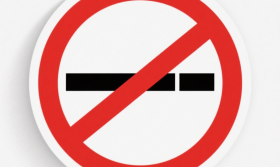If you're one of the millions of men navigating the frustrating and often painful journey of chronic prostatitis, you know that every aspect of your life can feel affected. From persistent discomfort to the mental toll of a relentless condition, the search for relief is constant. In this quest, you might be overlooking a significant, modifiable factor that could be silently worsening your symptoms: tobacco use. The connection between smoking and lung cancer is well-known, but its profound impact on urological health, particularly on conditions like chronic prostatitis, is a critical piece of the puzzle that deserves your full attention.
Chronic prostatitis, specifically the chronic pelvic pain syndrome (CPPS) category, is more than just a prostate issue; it's a complex interplay of inflammation, nerve sensitivity, and muscular dysfunction. The primary goal of any management strategy is to improve your quality of life by reducing pain, improving urinary function, and restoring a sense of normalcy. It's a condition scored and tracked using specific quality of life questionnaires, and the trajectory of that score is what truly matters. What we will explore is how the habit of smoking directly fuels the mechanisms that cause that score to decline more steeply.
Let's break down exactly how tobacco smoke interferes with your body's systems to aggravate this condition.
The first and most direct assault is through inflammation. Your body is in a delicate balance, and chronic prostatitis represents a state of heightened, persistent inflammatory activity. Tobacco smoke introduces a cocktail of thousands of chemicals, many of which are potent pro-inflammatory agents. When you inhale smoke, these toxins enter your bloodstream and travel throughout your body. They don't just stay in your lungs. They trigger the release of a flood of inflammatory markers, such as C-reactive protein and various cytokines. For a prostate that is already inflamed, this is like pouring gasoline on a fire. This systemic inflammation can intensify the local inflammation in your pelvic region, leading to more severe pain, greater swelling of the prostate tissue, and a heightened sense of pressure and discomfort.
Beyond general inflammation, nicotine and other chemicals have a devastating effect on your circulatory system. They cause your blood vessels to constrict, reducing blood flow to all parts of your body, including the pelvic region. Healthy blood flow is essential for delivering oxygen and nutrients to tissues and for removing waste products and inflammatory mediators. When circulation to the prostate and surrounding pelvic muscles is compromised, the area is starved of the resources it needs to heal. Metabolic waste builds up, further irritating nerves and tissues. This poor circulation perpetuates a cycle of damage and discomfort, making it much harder for your body to recover from prostatitis flare-ups.
Another critical piece of the chronic prostatitis puzzle is neuromuscular dysfunction. Many men with CPPS experience tension and spasms in the pelvic floor muscles. This tension can be a primary source of pain and can refer discomfort to other areas like the lower back, genitals, and rectum. Nicotine is a powerful stimulant. It can exacerbate muscle tension and heighten neurological excitability. Think of it as putting your nervous system on constant "high alert." This can make your pelvic muscles tighter and more prone to spasms, directly translating into increased pain scores and a greater feeling of urinary urgency or incomplete emptying. Furthermore, the constant stimulation can lower your pain threshold, meaning you feel pain more intensely from the same level of stimulus.
The impact of smoking extends to the very medications and treatments you might be relying on. Research suggests that smokers may have an altered response to pain medications, often requiring higher doses to achieve the same level of relief. This can complicate pain management strategies for chronic prostatitis. If you are using anti-inflammatory drugs, the constant inflammatory onslaught from smoking can make them less effective. This can lead to a frustrating scenario where you feel your treatments aren't working as well as they should, potentially leading to a cycle of increased medication use without proportional relief.
We cannot discuss quality of life without addressing the psychological dimension. Chronic prostatitis is strongly linked with conditions like anxiety and depression. The stress of dealing with chronic pain and urinary symptoms is immense. While some may use smoking as a way to cope with this stress, it is a counterproductive strategy. Nicotine creates a temporary feeling of relaxation, but it is followed by a withdrawal period that increases anxiety and irritability. This creates a vicious cycle: you feel stressed from your symptoms, you smoke to relieve it, the nicotine worsens your inflammation and muscle tension, your physical symptoms intensify, and your stress levels rise even higher, prompting you to smoke again. Breaking this cycle is one of the most powerful steps you can take for both your mental and urological health.
The evidence linking smoking to a more severe decline in quality of life for chronic prostatitis patients is compelling. Clinical studies that track patients over time consistently show that smokers report higher pain scores, more severe urinary symptoms, and a lower overall quality of life compared to non-smokers. Their condition often progresses more stubbornly, and they may find that standard therapies provide less benefit. The decline in their quality of life score is not just a little steeper; it can be significantly more pronounced, affecting their ability to work, engage in social activities, and maintain intimate relationships.
Understanding this connection is the first step. The next, and most crucial step, is taking action. Quitting tobacco is arguably the single most effective lifestyle modification you can make to alter the course of your chronic prostatitis. The benefits begin almost immediately.
Within just a few weeks of your last cigarette, your circulation begins to improve. Blood flow to your pelvic region normalizes, allowing for better oxygenation and more efficient removal of inflammatory waste products. This alone can lead to a noticeable reduction in pelvic heaviness and discomfort.
As the months pass, the systemic inflammation in your body will significantly decrease. Without the constant influx of pro-inflammatory chemicals from tobacco smoke, the inflammatory fire in your prostate has a chance to subside. You may find that your pain levels become more manageable and that flare-ups become less frequent and less intense.
Your nervous system will also start to calm down. Without the stimulant effect of nicotine, overall muscle tension, including in the pelvic floor, can decrease. This can lead to a reduction in spasms and referred pain. Furthermore, as the cycle of nicotine-induced anxiety and withdrawal is broken, your underlying stress levels may become easier to manage with healthy coping techniques, creating a positive feedback loop for your pelvic health.
Quitting is a challenge, but you don't have to do it alone. Here are some practical steps to integrate smoking cessation into your prostatitis management plan.
First, be open with your urologist or healthcare provider. Tell them you want to quit smoking to improve your prostatitis symptoms. They can be a powerful ally, offering resources, support, and potentially prescribing medications like nicotine replacement therapy (patches, gum, lozenges) or non-nicotine prescriptions such as bupropion or varenicline. These tools can double your chances of success.
Seek behavioral support. Consider joining a smoking cessation program or using telephone quitlines. Talking to a counselor can help you identify your smoking triggers and develop strategies to handle them. Since stress is a major trigger and a component of prostatitis, learning stress-management techniques like deep breathing, meditation, or gentle pelvic-focused yoga can address both issues simultaneously.

Combine your quit journey with other prostatitis-friendly lifestyle changes. As you work on quitting, increase your water intake to help flush out your urinary system. Adopt an anti-inflammatory diet, rich in fruits, vegetables, and omega-3 fatty acids (found in fish like salmon), to further combat inflammation from the inside out. Engage in regular, low-impact exercise like walking or swimming, which can improve pelvic blood flow, reduce stress, and distract you from cravings.
It's important to set realistic expectations. You might not see a dramatic overnight cure, but the cumulative effect over weeks and months is profound. Some men report a noticeable improvement in their pelvic pain and urinary symptoms within the first one to three months of quitting. The key is persistence. Every day you are free from tobacco, you are actively reducing the inflammatory burden on your body and giving your prescribed prostatitis treatments a better environment in which to work effectively.
Your quality of life with chronic prostatitis is a composite of many factors—medical treatments, physical therapy, diet, and psychological well-being. Tobacco use negatively impacts every single one of these domains. By choosing to quit, you are not just making a decision for your long-term cardiovascular or pulmonary health; you are making a direct and powerful intervention in your urological health. You are taking control of a key variable that has been pushing your quality of life scores downward. It is a challenging journey, but the reward—a life with less pain, fewer symptoms, and greater freedom—is undoubtedly worth the effort. Your path to better managing chronic prostatitis and reclaiming your comfort and vitality may very well begin with extinguishing that last cigarette.












